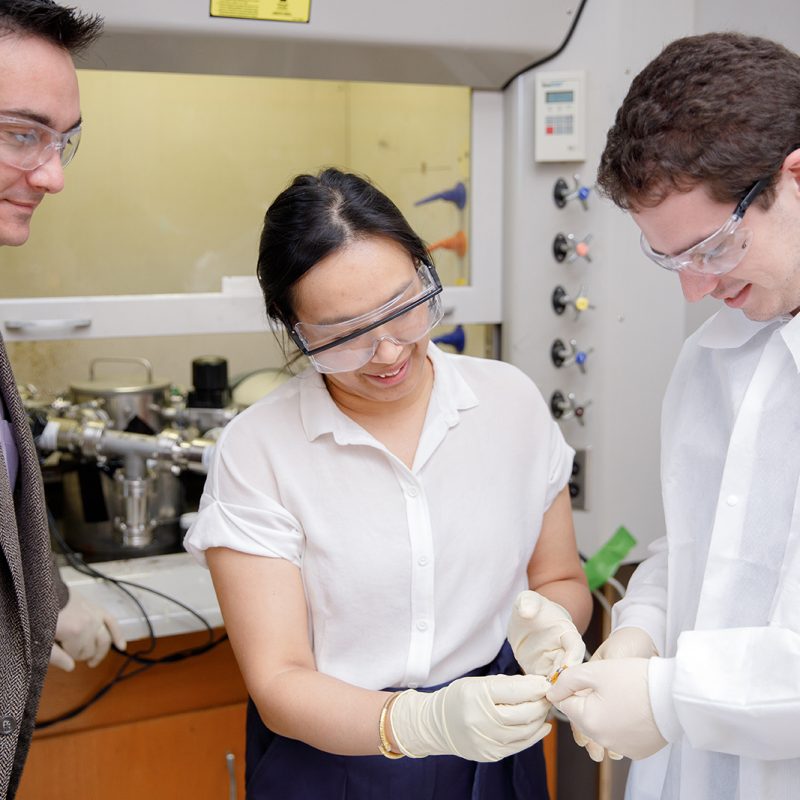Two innovative projects at The University of Alabama are part of a national program aimed to help take technology from the lab to the market.
They are part of this summer’s cohort in the National Science Foundation Innovation Corps, or I-Corps, Teams program. The program provides NSF-funded researchers entrepreneurial education, mentoring and funding to accelerate innovation to attract third-party funding.
With seven active projects, UA leads the state in I-CORPS teams and is among the top 10 universities nationwide.

“Inclusion in the I-CORPS program for our researchers is a recognition of their forward-thinking efforts to enhance quality of life for everyone,” said Dr. Russell J. Mumper, UA vice president for research and economic development. “Technology-based start-up companies integrate the University’s missions of research and education and also highlight the University’s mission to enhance economic development in the state.”
UA’s NSF I-CORP site director is Dr. Robert Morgan, professor of marketing in the Culverhouse College of Business and director of the STEM Path to the MBA Program.
“NSF I-Corps was developed to help move discoveries from the laboratory bench to the marketplace,” Morgan said. “The vast majority of teams supported are commercializing intellectual property that came about from research funding from the major science-funding agencies of the federal government. The program’s goal is to ensure that taxpayers’ investments in research result in positive economic outcomes for our nation.”
One project from UA could provide a less expensive and easier way for the military and first responders to detect dangerous, airborne chemicals, while the other could provide solutions for wiring advanced computers that rely on superconducting materials.
Dr. Adam Hauser, assistant professor of physics, is developing chemical sensors that weigh significantly less and are much less expensive than current chemical sensors. The technology uses electrical signals to find the frequency emitted by the subatomic particles in chemical gasses.
He has collaborated with the U.S. Army Combat Capabilities Development Command, or CCDC, Chemical Biological Center in Maryland on developing the technology.
The sensors are roughly the size of a quarter coin. They could be placed on drones or woven into clothing. For instance, they could alert soldiers of toxic chemicals before entering an area, or first responders could detect the spread of dangerous chemicals at the site of industrial accidents.
Chemical sensors worn by soldiers now weigh up to 25 pounds. The sensors developed by Hauser’s lab currently weigh less than 2 grams.
“They are designed to be small, inexpensive and disposable because sensing a dangerous chemical means contaminating the sensor itself,” Hauser said. “If the device can be discarded, it is safer for our warfighter and avoids significant decontamination costs for the taxpayer.”
A spin-off company, Foresense, has licensed the technology from UA, and won an on-campus start-up contest this past spring.
Along with Hauser, the I-CORPS team includes student Zachary Holdbrooks and Michael Bartz as co-entrepreneurial leads. Holdbrooks, from Attalla, Alabama, is studying electrical and computer engineering while Bartz, studying physics and math, is from Fort Wayne, Indiana.
The other project in this summer’s I-CORPS program aims to replace superconducting materials in current applications such as quantum computers and MRI machines with materials coated with superconducting materials.
Developed in the lab of Dr. Qiang Huang, assistant professor of chemical and biological engineering, the technology is a less expensive way to fabricate the superconducting material that performs better and at higher temperatures.
“This is a better way to make the materials and integrate them into circuitry,” said Will Sides, a doctoral student in Huang’s lab who serves as the entrepreneurial lead for the I-CORPS team.
Sides, originally from Houston, Texas, graduated from UA with a bachelor’s degree in chemical engineering in 2015.
Members of both teams attended training through a seven-week curriculum to help them achieve a commercial impact with their innovation. I-Corps Team awards support the team’s participation in the curriculum and their customer discovery work.

